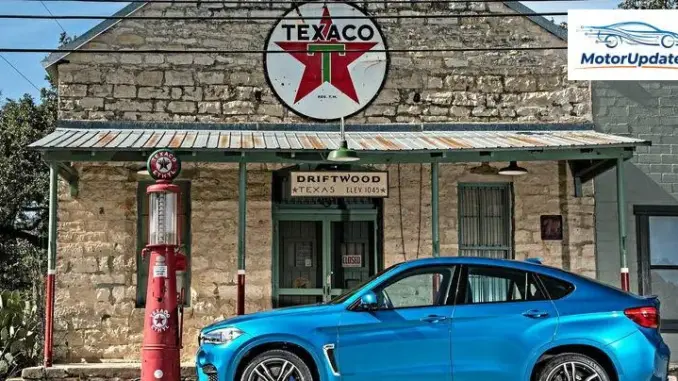
Who pays for climate policy when new-car sales fall? The state searches for revenue. It now eyes the used-car market. This change could hit large, heavy SUVs first. Expect big shifts from January 1, 2026.
What is the new used-car eco-malus?
What does this rule do? It applies an environmental tax when some used cars change hands. The measure targets vehicles that escaped taxes at birth. The state will use today’s rules on older cars sold second-hand. Think of it as updating a price tag for modern standards.
Which vehicles are in the crosshairs?
Which cars are at risk? Large SUVs and 4x4s are prime targets. The rule looks at weight and CO2 emissions. For now, cars registered from January 1, 2015 count. Emissions must reach a threshold. Weight must also surpass a limit. In short, heavy petrol or diesel SUVs are the main targets.
Calculation method and criteria
How will authorities calculate the fee? Two parts guide the math. First, the CO2-based scale used in the car’s registration year. Second, a wear-and-tear coefficient reduces the amount for older cars. The government adds weight as a factor from 2022 onward. So both emissions and mass matter.
Example scenario
What would this look like in practice? Imagine a 2016 SUV weighing 1,900 kg. Its CO2 figure is 140 g/km. It avoided a malus when new. Now it could face a used-car eco-fee in 2026. The fee is lowered by age. But a real bill still appears at resale.
Why the government acts now
Why change a rule that missed older cars? New-car sales fell by about 500,000 units yearly. That loss cut tax income. Meanwhile, electric vehicle aid costs are rising. The state seeks new revenue sources. The used market sells multiple times the volume of new cars. So it looks like a tempting tax base.
Who benefits and who loses?
Who gains from this shift? The treasury gets new revenue. Public funds pour into EV support. Who loses? Owners and buyers of heavy used cars lose. Dealers who trade such models may see demand fall. Buyers may choose lighter or cleaner alternatives.
Market ripple effects
What happens to prices and choices? Expect second-hand prices for heavy SUVs to drop. Buyers might delay purchases. Some will opt for smaller cars. Others may seek models already taxed at birth. The used EV market could stay weak without incentives.
Real-world example
Look at a high-end V8 SUV listed online. It is heavy and thirsty. It often sold untaxed when new. From 2026, its resale could include a large eco-fee. The owner may cut the asking price to cover the cost. That will change bargain hunting.
Is this retroactive or a simple update?
Is the rule unfairly retroactive? Legally, it is framed as an update, not retroactive punishment. The tax uses current grids for past models. Many will still feel it is unjust. It taxes choices made under former rules. The debate will likely continue.
Policy rationale and critics
What do officials say? They cite the need to cut fleet emissions. They argue heavier cars emit more pollutants overall. Critics call the move opportunistic. They say it penalizes habits formed under old rules. The discussion mixes climate goals and fiscal needs.
How buyers can prepare
What can used-car buyers do now? Check a car’s registered weight and CO2 numbers before buying. Ask sellers who will pay the fee. Consider cars registered before 2015 if you want certainty. Or prefer models already taxed when new. Comparison shopping will matter more.
Tips for sellers and dealers
How should sellers act? Disclose emissions and weight clearly. Factor possible malus into asking price. Offer buyer protections or warranties. Dealers should adapt stock strategy toward lower-weight cars. Transparency will build trust.
Avoiding surprises
Always request the official registration document. It lists CO2 and mass figures. Use those numbers to estimate any future eco-fee. Many online tools can help. Do not rely on ad photos alone.
Impact on the electric transition
Will this tax speed up EV uptake? Maybe, but not guaranteed. EV sales still depend on incentives. The state subsidizes EVs heavily. That makes the budget balance tricky. Consumers might distrust shifting rules. Analogies help: it is like patching a leaking roof with expensive paint.
Broader market consequences
Could the measure backfire? If heavy used models flood the market, pollution could rise. Or buyers might delay purchases, shrinking turnover. The fiscal gain may prove temporary. Policy design will shape long-term effects.
What remains unclear
Which cars will be taxed later? Will previously taxed models stay exempt? How the wear coefficient will evolve is murky. Transition rules may change again. Buyers and sellers must stay alert.
This eco-malus reshapes the used-car landscape. It targets heavy, high-CO2 models from 2015 onward. The fee combines CO2 scales and age discounts. Buyers and sellers must check weight and emissions now. The move mixes climate aims with fiscal needs. Expect market shifts, price drops for targeted SUVs, and more caution from shoppers. Keep documents handy and ask pointed questions before any purchase.

Leave a Reply